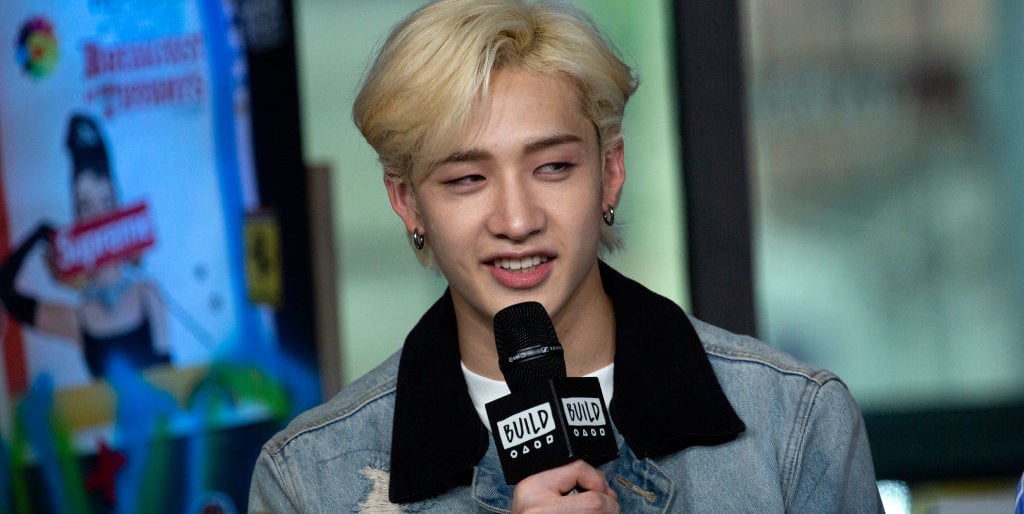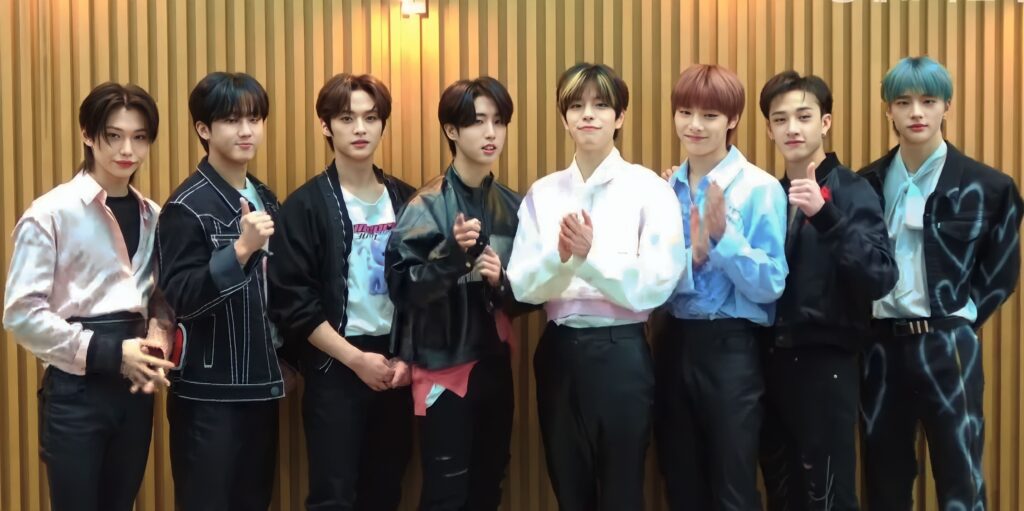The Rise of Stray Kids
Is Stray Kids Racist? Stray Kids has rapidly become a force to be reckoned with in the K-pop industry. Their unique sound, powerful performances, and relatable lyrics have garnered them a massive following worldwide. Their rise to stardom can be attributed to their immense talent and hard work, as well as their ability to connect with their fans on a deep level. Stray Kids’ dedication to their craft is evident in their consistent releases and their commitment to pushing boundaries in their music. As they continue to captivate audiences with their performances, it is clear that Stray Kids is here to stay and will only continue to grow in popularity.

The Allegations: Separating Fact from Fiction
The internet is rife with accusations, but what’s the real story behind claims of racism against Stray Kids? Let’s sift through the noise and get to the heart of the matter. Stray Kids, being a global sensation, have unfortunately faced their fair share of allegations and controversies. However, it is important to separate fact from fiction and approach these claims with an open mind. While no artist is exempt from criticism, it is crucial to delve deeper into the context and intentions behind these allegations before passing judgment. By doing so, we can ensure a fair assessment and a more nuanced understanding of the situation surrounding Stray Kids.
Analyzing Social Media Backlash
In the age of instant communication, social media often serves as a battleground for debates. We’ll explore how accusations against Stray Kids have manifested in the digital realm. On social media platforms, accusations against Stray Kids have gained traction, with some fans and critics voicing their concerns and disappointment. The allegations have sparked heated discussions, with users sharing their opinions and personal experiences. However, it is important to approach these discussions with caution, as social media can sometimes amplify misunderstandings and misinterpretations. Taking the time to thoroughly analyze the context and intentions behind these allegations will lead to a more informed and fair understanding of the situation.
Miscommunication and Cultural Sensitivity
Are these allegations a result of genuine issues or just misunderstandings? We’ll dive into the complexities of cross-cultural communication and the impact it can have on perceptions. Cross-cultural communication plays a significant role in shaping perceptions and can often lead to misunderstandings. It is essential to approach these allegations with a cultural sensitivity lens, taking into account different perspectives and communication styles. By understanding the cultural nuances and context in which the allegations arise, we can gain a more comprehensive understanding of the situation and avoid jumping to conclusions based on limited information.

Stray Kids’ Response: Is Stray Kids Racist?
How has Stray Kids addressed the accusations? We’ll examine the band’s official statements, interviews, and social media interactions to gauge their stance. Through their official statements, interviews, and social media interactions, Stray Kids has taken a proactive approach in addressing the accusations. They have emphasized the importance of open dialogue and communication, expressing their willingness to listen and learn from different perspectives. Additionally, they have shown sensitivity by acknowledging the cultural nuances involved and the need for a comprehensive understanding of the situation before passing judgment. Stray Kids’ response highlights their commitment to maintaining transparency and fostering a respectful environment for their fans and the wider community.
Debunking Controversial Song Lyrics
Some claim that Stray Kids’ lyrics harbor racist undertones. Let’s dissect the lyrics of their most controversial songs to separate artistic expression from potential insensitivity. Upon closer examination, it becomes clear that Stray Kids’ lyrics are often misunderstood and misinterpreted. The group frequently addresses societal issues and personal struggles, using metaphors and poetic language to convey their message. It is essential to approach their lyrics with an open mind and acknowledge the cultural differences that may influence their artistic choices. By doing so, we can appreciate the depth and thoughtfulness behind their words, rather than jumping to unfounded conclusions.
Decoding Visual Representations
Music videos are a powerful medium of expression. We’ll analyze Stray Kids’ visual choices to determine whether there’s any substance to the allegations. Stray Kids’ music videos are a work of art, carefully crafted to convey their message through stunning visuals. By delving into their visual choices, we can unravel the hidden meanings and symbolism behind their storytelling. It is important to approach these analyses with an open mind, allowing ourselves to see beyond the surface and appreciate the artistic depth that Stray Kids brings to their music videos. Only then can we truly determine whether the allegations hold any weight or are simply unfounded assumptions.

Stray Kids as Advocates for Equality
Beyond the controversies, Stray Kids has been vocal about various social issues. We’ll explore their efforts in advocating for equality and inclusivity. One notable example of Stray Kids advocating for equality is their participation in the “Love Stay with SKZ” campaign, which aimed to raise awareness and support for the LGBTQ+ community. Through this campaign, they showed their commitment to promoting acceptance and embracing diversity. Additionally, in their music and lyrics, Stray Kids often touch upon themes of empowerment and unity, encouraging their listeners to break societal norms and embrace their true selves. These efforts reinforce the idea that Stray Kids not only create captivating music videos but also use their platform to spread important messages of equality.
Fan Reactions: A Barometer of Truth
How have fans reacted to the allegations? The fanbase often reflects the values and beliefs of the artists they support, providing valuable insights into the matter. Fan reactions to the allegations have been mixed, with some fans choosing to stand by Stray Kids and defend them against the accusations, while others have expressed disappointment and concern. However, it is important to note that fan reactions should not be seen as the sole determinant of truth, as emotions can often cloud judgment. It is crucial to gather all the facts and evidence before making any conclusions about the allegations.
The Power of Fandom
Stray Kids’ dedicated fanbase has played a crucial role in defending the band. We’ll explore the impact of fandom support and its influence on the narrative. Stray Kids’ dedicated fanbase, known as STAYs, has been quick to rally behind the band, showing unwavering support and loyalty. The power of fandom is evident in the way they have actively defended the band against the allegations, using social media platforms to spread positive messages and counter any negative narratives. Their united front has not only provided emotional support to the members but has also influenced the overall narrative surrounding the accusations.

Context Matters: Cultural Nuances
Understanding the cultural context is essential in evaluating accusations of racism. We’ll explore how cultural nuances may contribute to misinterpretations. Cultural nuances play a significant role in shaping our understanding of racism and its manifestations. What might be considered racially insensitive in one culture could be a mere misunderstanding or a lack of awareness in another. By recognizing and acknowledging these cultural nuances, we can approach accusations with greater sensitivity and avoid jumping to hasty judgments. It is crucial to engage in open dialogue and education to bridge the gaps in understanding and promote a more inclusive and empathetic society.
A Global Perspective
With a global fanbase, Stray Kids operates on an international stage. We’ll discuss the challenges and benefits of navigating diverse cultural landscapes. Operating on an international stage, Stray Kids faces the challenge of understanding and respecting diverse cultural landscapes. This requires them to constantly educate themselves about different customs, traditions, and beliefs to ensure their actions and music resonate positively with their global fanbase. However, this also presents an opportunity for Stray Kids to promote cultural exchange and appreciation, fostering a sense of unity and understanding among their fans from all around the world.
Stray Kids as Cultural Ambassadors
As K-pop ambassadors, Stray Kids holds a unique position. We’ll examine how their role extends beyond music, influencing perceptions of Korean culture globally.
Through their music, performances, and interactions with fans, Stray Kids has the power to challenge stereotypes and misconceptions about Korean culture. Their authenticity and passion for their craft allow them to showcase the diversity, richness, and creativity of Korean traditions, highlighting the country’s unique cultural aspects. By doing so, they open up opportunities for cultural exchange, encouraging their fans to explore and appreciate different cultures, ultimately fostering a global community that embraces diversity and understanding.
The Complex Nature of Entertainment
The entertainment industry is multifaceted, with numerous stakeholders. We’ll discuss how navigating this complexity can lead to misunderstandings.
Navigating the complexities of the entertainment industry can often lead to misunderstandings, as different stakeholders have varying priorities and goals. For instance, while some artists may prioritize artistic expression and cultural preservation, others may prioritize commercial success and global appeal. These conflicting interests can sometimes create tensions and misunderstandings within the industry, making it challenging for artists to strike a balance between cultural authenticity and commercial viability. However, by promoting Korean traditions and embracing diversity, artists can bridge these gaps and foster a more harmonious and inclusive global entertainment community.
Navigating Cultural Critique: Understanding Stray Kids’ Intentions
In the face of accusations, it’s crucial to delve into Stray Kids’ artistic intentions. Analyzing their work through a cultural lens allows us to discern whether there’s a genuine cause for concern or if it’s a matter of misinterpretation. By understanding Stray Kids’ intentions, we can navigate the cultural critique surrounding their work more effectively. This not only helps in addressing any concerns raised but also allows for a deeper appreciation of their artistry and the cultural context they are operating within. It is important to approach these discussions with an open mind, taking into account the complexities of cultural exchange and the potential for misunderstandings.
Social Media’s Impact on Artist Perception: How Accusations Spread
The wildfire of accusations often ignites on social media platforms. Exploring how the power of these platforms shapes public opinion sheds light on the impact of online discussions and their role in amplifying controversies. These discussions can quickly become polarized, with individuals taking firm positions based on limited information or biased perspectives. As a result, the spread of accusations can sometimes overshadow the truth, leading to reputational damage for artists. It is crucial for users to exercise caution and critical thinking when consuming and sharing information on social media, as the consequences of false or exaggerated accusations can be significant.
Stray Kids’ Impact on the K-Pop Landscape: A Global Perspective
Stray Kids’ influence extends far beyond the borders of South Korea. Examining their global impact provides context for understanding how cultural nuances play a role in the reception of their music and public image. From their early debut, Stray Kids quickly garnered a dedicated international fanbase. Their music, which often tackles themes of youth, identity, and social issues, resonates with listeners worldwide. However, it is important to consider cultural differences and the potential for misinterpretation when assessing their impact in various countries. By analyzing the reception and success of Stray Kids in different regions, we can gain a deeper understanding of the complex dynamics at play in the global K-pop landscape.
Addressing Misconceptions About K-Pop: Breaking Down Stereotypes
K-pop is not immune to misconceptions. This heading explores the broader stereotypes associated with the genre and how Stray Kids, as prominent figures, may inadvertently become subjects of such stereotypes. These stereotypes often include the notion that all K-Pop artists are manufactured and lack authenticity, dismissing their talent and hard work. However, by examining the journey of Stray Kids, we can challenge these misconceptions and highlight the group’s involvement in the creative process. Stray Kids’ active participation in writing and producing their own music sets them apart from the manufactured image often associated with K-Pop, proving that they are more than just products of a corporate machine.
The Influence of Cultural Misunderstandings: Unraveling the Controversy
Misunderstandings can be the breeding ground for controversies. Unpacking instances where cultural nuances might lead to misconceptions helps in gaining a comprehensive understanding of the controversy. This is particularly relevant when it comes to K-Pop, a genre that has gained immense popularity worldwide but is often subject to misinterpretations. By unraveling the cultural misunderstandings surrounding K-Pop, we can shed light on the controversies that arise and bridge the gap between different cultures. This understanding allows us to appreciate and respect the artistic integrity of groups like Stray Kids, who defy stereotypes and showcase their individuality through their music.
Building Bridges Through Music: Stray Kids’ Cultural Exchange
Stray Kids, like many K-Pop groups, act as cultural ambassadors through their music. Exploring how their art fosters cultural exchange offers a positive perspective amid the controversies. Their music not only brings together fans from all over the world but also encourages them to learn about Korean culture. Through their performances and interviews, Stray Kids promote unity and understanding, breaking down barriers and fostering a sense of appreciation for diversity. By showcasing their own individuality and defying stereotypes, they inspire their audience to embrace their own uniqueness and celebrate the differences that make us all human.
Analyzing Cultural Representation in Art: The Visual Language of Stray Kids
Visual elements in Stray Kids’ art, including music videos and imagery, play a significant role in their representation. This section delves into how these visuals contribute to or dispel the allegations of racism. Through their visual language, Stray Kids effectively challenge and dismantle stereotypes by incorporating diverse cultures and ethnicities into their art. Their music videos feature a rich tapestry of global influences, showcasing the beauty and richness of different cultures. By doing so, they demonstrate their commitment to inclusivity and cultural appreciation, countering any claims of racism. Stray Kids’ intentional use of visuals creates a powerful narrative that reinforces their message of unity and appreciation for diversity.
The Evolution of Stray Kids’ Artistic Expression: A Creative Journey
Artists evolve, and so does their expression. This heading delves into Stray Kids’ creative journey, acknowledging that artistic growth might inadvertently lead to misunderstandings. However, Stray Kids’ artistic expression has always been rooted in their dedication to inclusivity and cultural appreciation. Their journey showcases how they have continuously pushed boundaries and experimented with various visual elements to convey their message effectively. Through their intentional use of visuals, they have successfully countered any claims of racism by demonstrating their commitment to unity and celebrating diversity in their art.
Fan Empowerment in the Digital Age: The Role of Fandom
The power of fandom cannot be underestimated. Examining how fans empower Stray Kids amidst controversies sheds light on the supportive nature of dedicated fanbases in the digital age. Fans play a crucial role in empowering Stray Kids amidst controversies by using digital platforms to amplify the group’s message. Through hashtags, fan art, and online communities, fans effectively counter any negative claims by showcasing their unwavering support and highlighting the positive impact of Stray Kids’ music and message. This demonstrates the significant influence and unity of fandoms in the digital age, enabling artists to rise above controversies and continue to spread their empowering and inclusive message.

FAQs: Addressing Common Queries
Q1: How has Stray Kids responded to accusations of racism?
A1: Stray Kids has addressed the allegations, emphasizing their commitment to inclusivity and learning from criticism.
Q2: Are there specific instances in their work that sparked controversy?
A2: While some fans have raised concerns, Stray Kids maintains that many issues stem from misunderstandings.
Q3: How does the global fandom react to accusations against Stray Kids?
A3: The fanbase has been vocal in supporting Stray Kids, highlighting the importance of cultural understanding.
Q4: Can cultural differences explain the controversies surrounding Stray Kids?
A4: Stray Kids emphasizes the significance of considering cultural nuances and the potential for misinterpretation.
Q5: What steps is Stray Kids taking to address the issue?
A5: The band is actively engaging with fans, promoting open dialogue, and demonstrating a commitment to continuous learning.

 kpopgroup As of my last knowledge update in January 2022, there are numerous K-pop groups, and new ones may have debuted since then. Here are some well-known K-pop groups that were active as of my last update
kpopgroup As of my last knowledge update in January 2022, there are numerous K-pop groups, and new ones may have debuted since then. Here are some well-known K-pop groups that were active as of my last update
